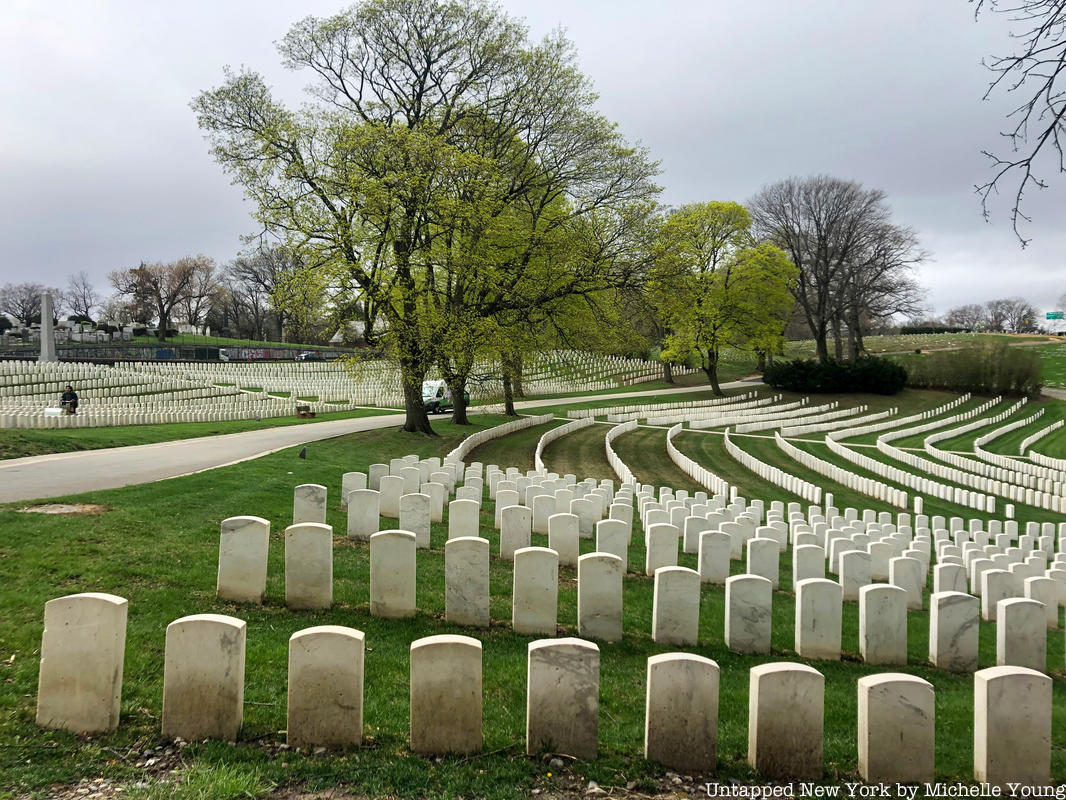Cypress Hills Cemetery, a non-sectarian burial ground that stretches into both Queens and Brooklyn, is not only the final resting spot of famous New Yorkers like Jackie Robinson and Mae West, but it is also home to the remains of soldiers who fought in conflicts from the American Revolution through to Operation Iraqi Freedom. Eighteen acres comprised of three separate areas on the Brooklyn side of the private cemetery are designated as Cypress Hills National Cemetery, a historic military cemetery owned by the federal government. This cemetery is the only military cemetery in New York City, and it predates Arlington National Cemetery by two years. In the National Cemetery, you will find neat rows of white headstones denoting where brave Veterans of the past four centuries have been laid to rest.
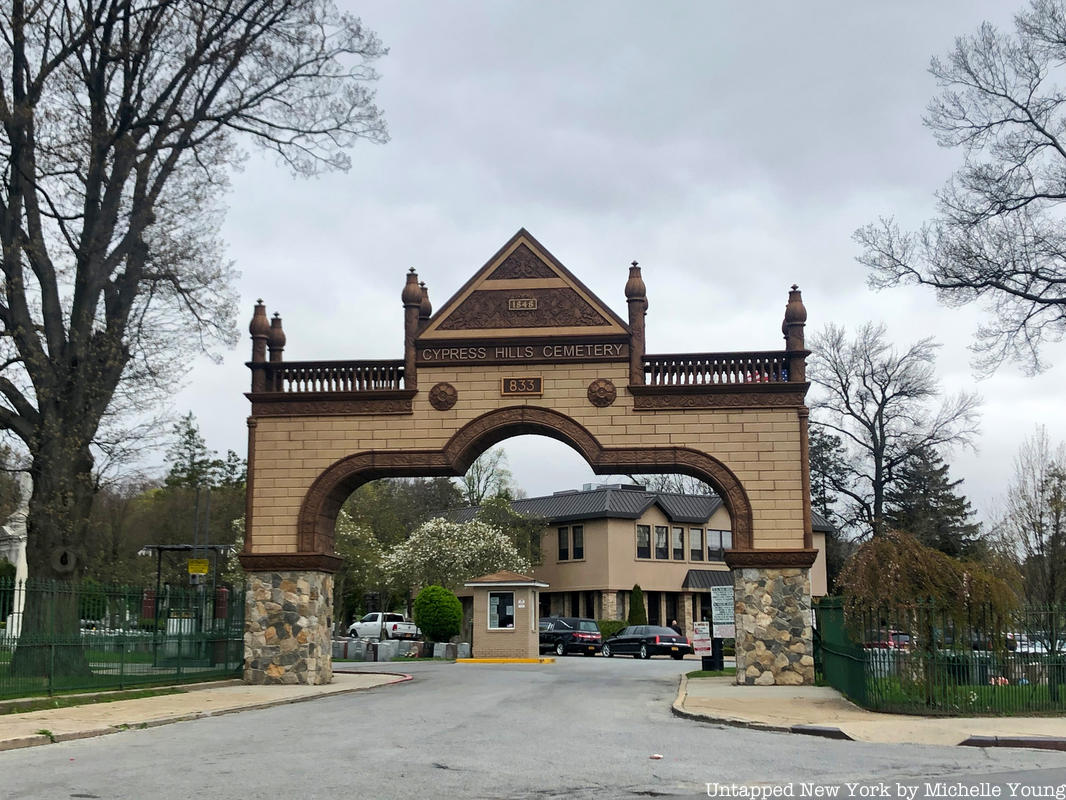 The entrance on Jamaica Avenue
The entrance on Jamaica Avenue
Cypress Hills cemetery opened to the public in 1851 after years of clearing and landscaping its 225 acres of rolling wooded hills, ponds, and lakes. The founders of Cypress Hills wanted to create a scenic place that would offer privacy and a tranquil setting for interments and their visiting relatives. From the high vantage point, you could see the ocean and Connecticut in the distance and over what was at the time, the countryside of Queens and Long Island. The land itself has ties to American military history. When digging and preparing the land, workers found cannonballs and other Revolutionary War artifacts from the August 1776 Battle of Long Island.
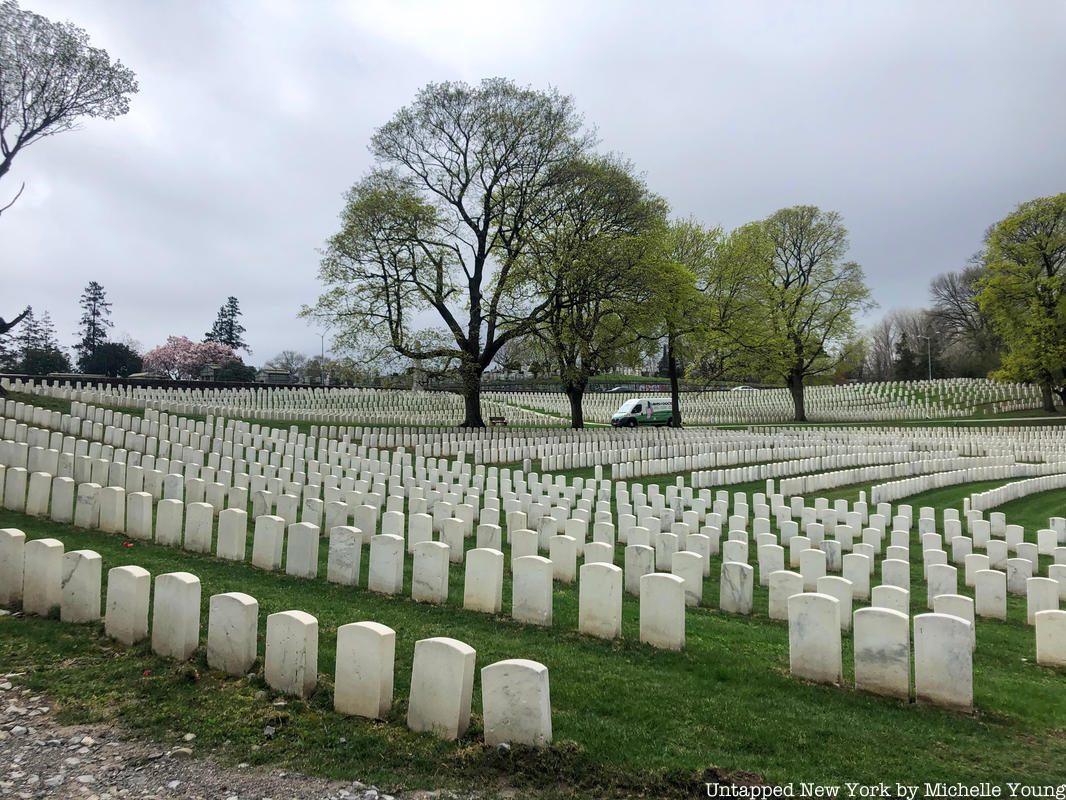
The military section of the cemetery opened in 1862 after the Omnibus Act allowed the government to purchase land to be used as “a national cemetery for the soldiers who shall die in the service of the country.” Cypress Hills was one of fourteen national cemeteries established that year and one of the first created by Congress. The National Cemetery started as a small three-acre plot called Union Grounds. Around 3,400 Union soldiers who died in New York City Hospitals during the Civil War were buried there.
When the plot started to reach capacity in 1884, the War Department purchased fifteen more acres of land along Jamaica Avenue. More than a thousand Union soldiers buried in other New York City locations, including Fort Hamilton, Governor’s Island, Fort Wadsworth, and Mount Hope Cemetery in Otisville, New York, were reinterred at Cypress Hills, raising the total number of Union soldiers to 5,222. More than three hundred of those burials are unknown, and five are recipients of the Medal of Honor. Members of the Navy who died and were buried at the Brooklyn Naval Hospital cemetery were also reportedly relocated to Cypress Hills. In addition to Union soldiers, 356 Confederate prisoners of war are buried at Cypress Hills. Unlike in other cemeteries, Confederate burials are intermingled with the Union burials. The grave keeper interred soldiers as they arrived and did not separate them by which side they fought on.
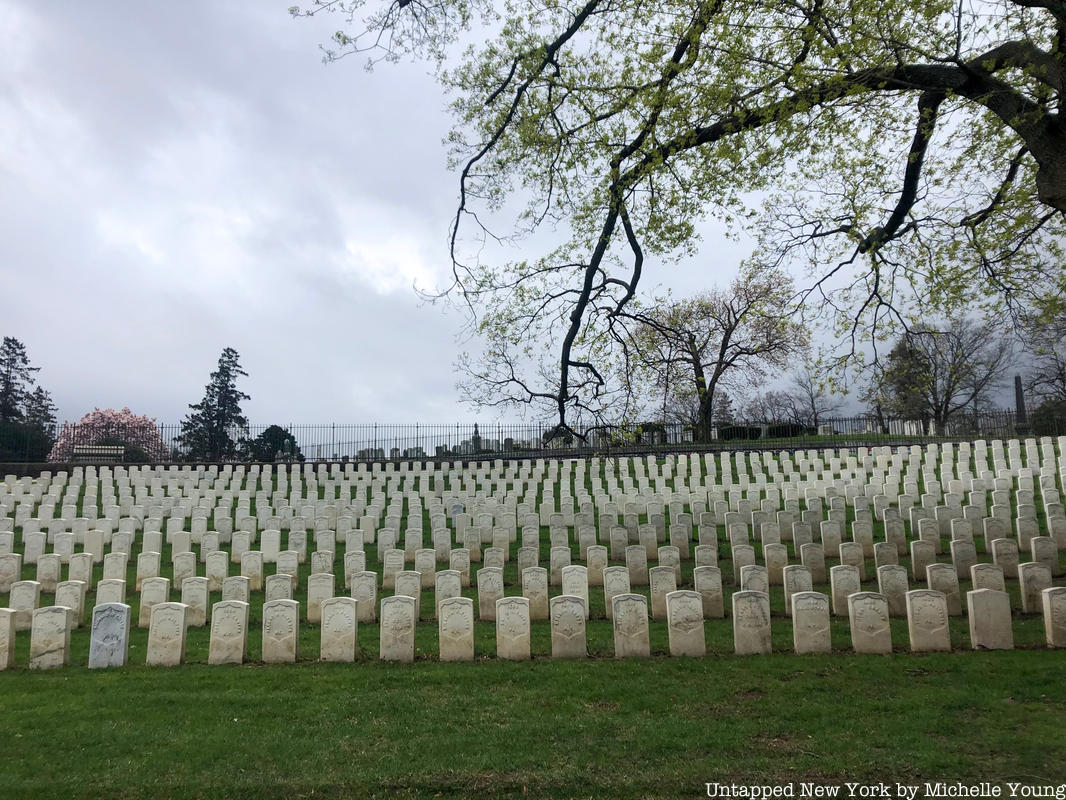
In 1941, the third and final piece of the Cypress Hills National Cemetery was donated by the State of New York. Mount of Victory Plot within the old Cypress Hills Cemetery contains less than thirty graves and is the final resting place of men who fought in the War of 1812. One notable internment is Hiram Cronk. Cronk lived until the age of 103 and was known for being the last surviving member of the War of 1812. At Victory Plot, you will find the Eagle Monument, a pyramid of fieldstones erected by laborers at Cypress Hill Cemetery around 1934. The pyramid is topped with a stone eagle from the Londino Construction Company in the Bronx. The Eagle Monument is one of five monuments located in the National Cemetery.
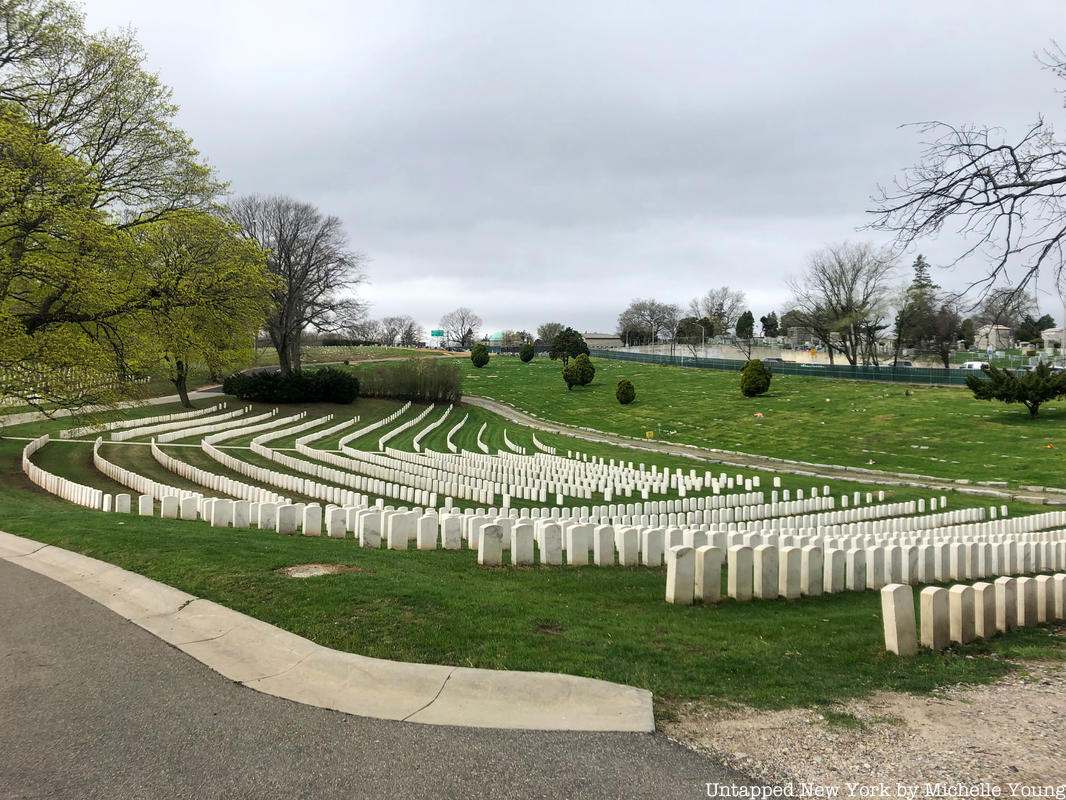
In addition to Civil War and War of 1812 Veterans, the National Cemetery is home to the remains of soldiers from the American Revolution, Spanish-American War, Korean, and Vietnam wars. The National Cemetery closed in 1954. Since then, new burials take place on existing or reserved graves or are redirected to Long Island National Cemetery in Suffolk County. There are a total of 21,000 veterans and veteran family members buried at the Cypress Hills National Cemetery. It was listed on the National Register of Historic Places in 1997. Anyone can visit the historic cemetery to walk around and pay their respects. The grounds are open every day from 8 am to 4:30pm, including weekends and holidays.
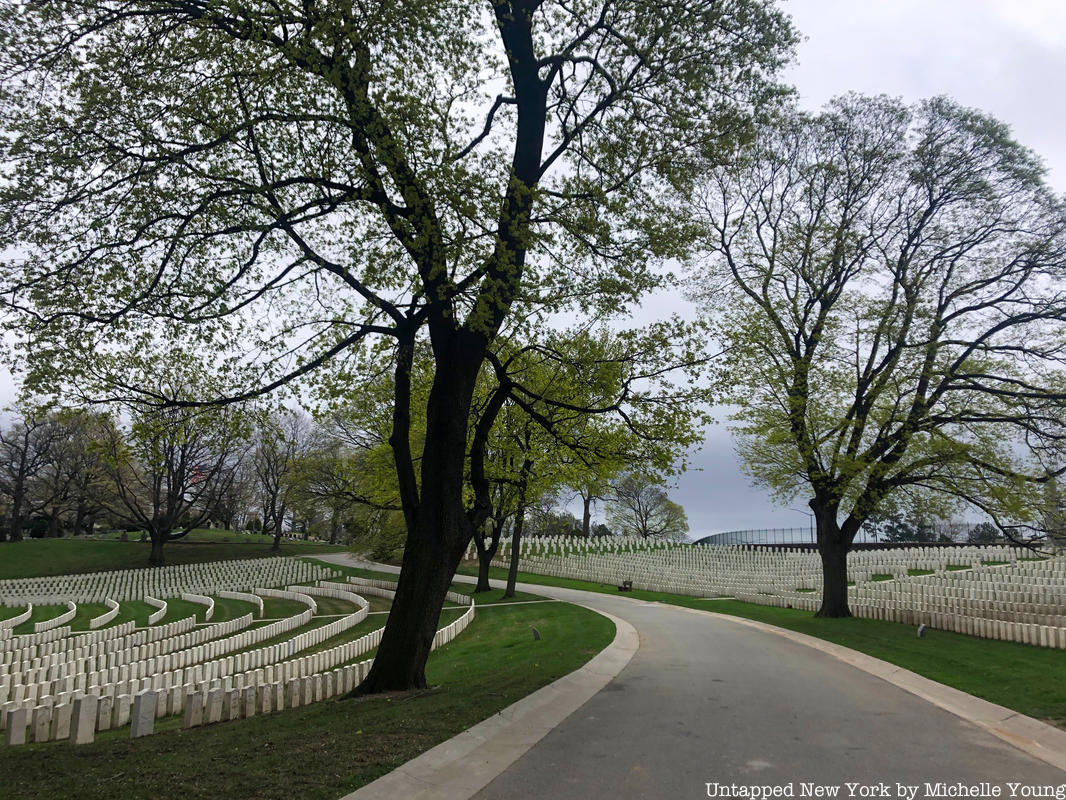
Next, check out 10 Famous Persons Buried in and Around NYC from Alexander Hamilton to Babe Ruth and Beautiful Naval Cemetery Landscape Reopens to Brooklyn’s Nature Lovers






